Where ground cover usually are for the foreground and stem plants for use in the back of an aquarium, there is another design level between, the so-called middle ground. This is, where, above all, the hardscape, (stones and driftwood) is placed, which can be greened beautifully with mosses and epiphytes. For the middle ground, however, solitary plants are also suitable, which neither grow strongly or too much in height, but rather excel through their compactness. Here are some examples.
Species overview of popular middle ground plants
Cryptocorynes
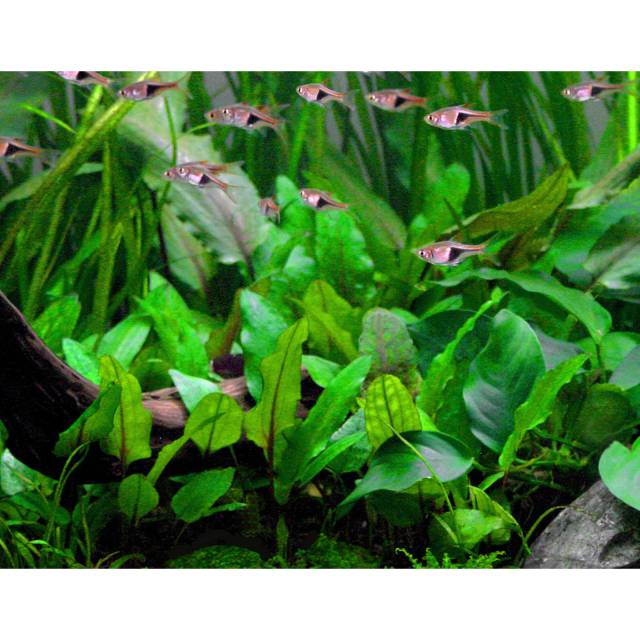
Water trumpets are basically the perfect plants for an aquarium’s middle ground. They grow compact, slow and are very frugal in terms of light and nutrients. They are very strongly rooting and thus help to strengthen stronger substrate ascents. In addition to different sizes, of course, also different leaf shapes and colors are available, whose emerse and submerse forms can often differ immensely. The color palette ranges from classic green (for example Cryptocoryne wendtii "green"), brown hues (Cryptocoryne wendtii 'Tropica') up to reddish (Cryptocoryne wendtii 'Mi Oya').
- Genus: Cryptocoryne
- Difficulty: easy
- Growth rate: medium
- Temperature tolerance: 15 - 30°C
- Can grow an emersed form: yes
Blyxa japonica
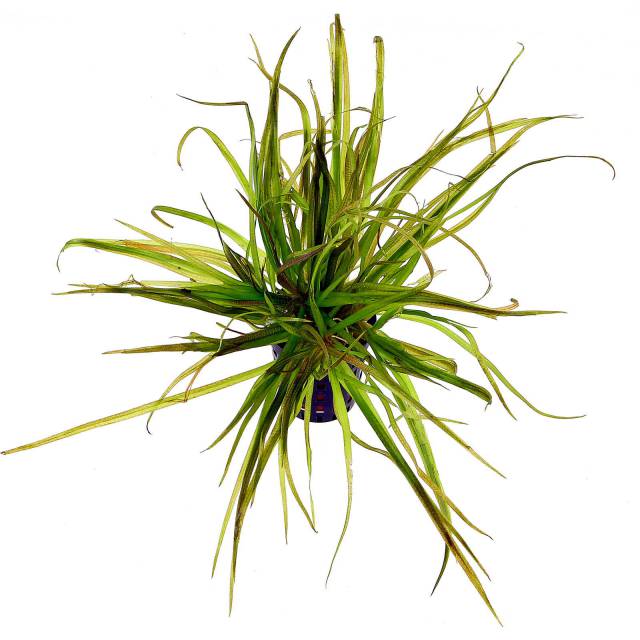
This is a purely submersed-growing, grassy aquatic plant. Depending on the light and nutrient situation, the leaves may appear green to pink. Unfortunately, this plant tends to dissolve within a few days, especially in new setups. Higher chances of success are given when planting the Japanese rush into an already longer-established aquarium.
- Genus: Blyxa
- DIfficulty: medium
- Growth rate: medium
- Temperature tolerance: 16 - 32°C
- Can grow an emersed form: no
Staurogyne repens
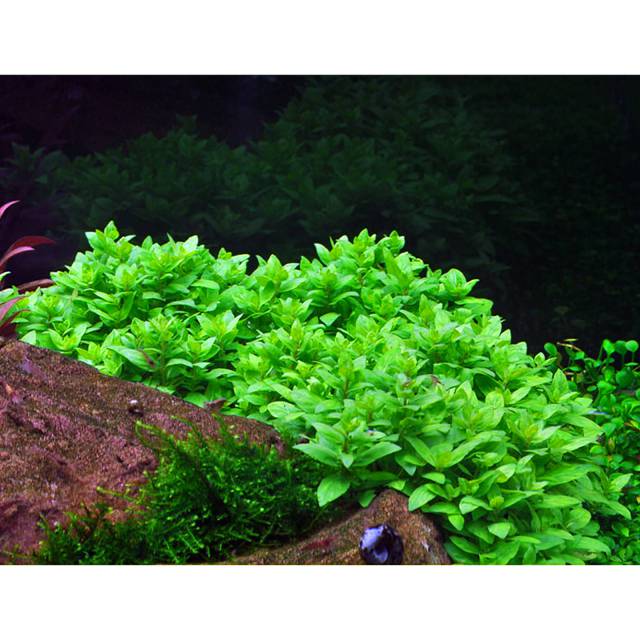
The creeping Staurogyne is, in principle, a very slow growing stem plant. It has the advantage that groups of this plant can be shaped into bushes by targeted pruning. In large aquariums it can even be used as a ground cover.
- Genus: Staurogyne
- DIfficulty: medium
- Growth rate: medium
- Temperature tolerance: 20 - 30°C
- Can grow an emersed form: yes
Alternanthera reineckii 'Mini'
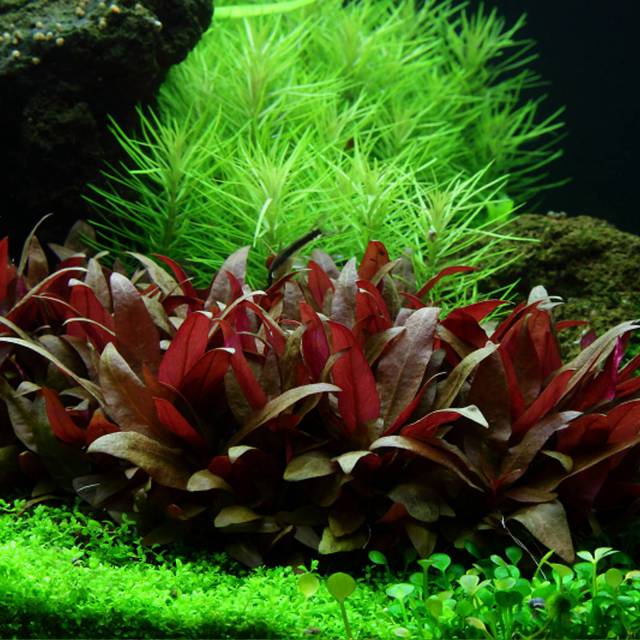
This small form of the parrot leaf is an ideal color accent for the foreground or middle ground of an aquarium. Depending on the lighting and nutrient situation, this plant produces brown-reddish to violet leaves. Since it is in principle a stem plant, it can be well brought into shape by pruning.
- Genus: Alternanthera
- DIfficulty: medium
- Growth rate: medium
- Temperature tolerance: 4 - 30°C
- Can grow an emersed form: yes
Helanthium tenellum
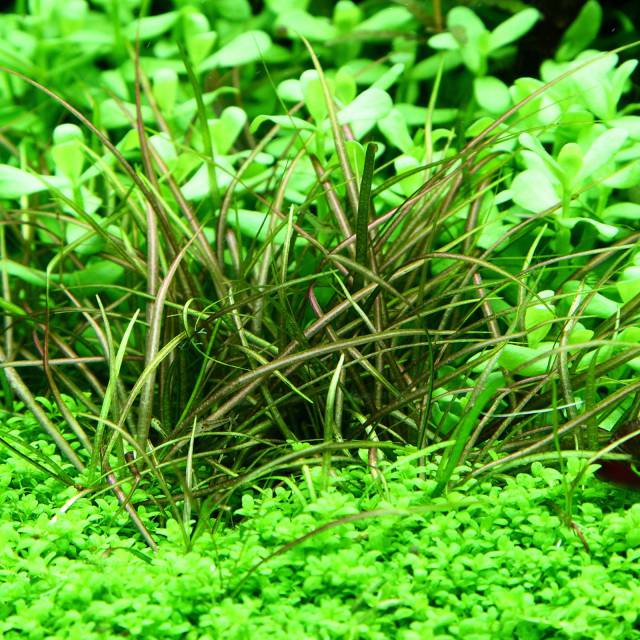
The pygmy chain sword is a beautiful, small-growing form and can be excellently used as a frugal fore- and middleground plant. The color of the leaves may vary from green to reddish depending on the type and nutrient situation. Helanthium tenellum procreates with stolons.
- Genus: Helanthium
- Difficulty: medium
- Growth rate: fast
- Temperature tolerance: 10 - 35°C
- Can grow an emersed form: yes
Care
In the middle ground, there is a preference for slow-growing species, which greatly simplifies the care in this area. The middle ground, consisting of these slow growing plants, in combination with decoration plays a strategic role in a nature aquarium: these elements hide the bare stems of pruned background plants. After some time, they’ll sprout again and start towering above the middle ground as usual.
From time to time, you should also bring over-grown middle ground plants back into shape. This is very species-dependent: Stem plants get trimmed with scissors, carpeting ground cover get liberated from their stolons. Compact growing rosette plants such as Cryptocorynes can be thinned out by parting the rhizome, if the mother plant has gotten too big.